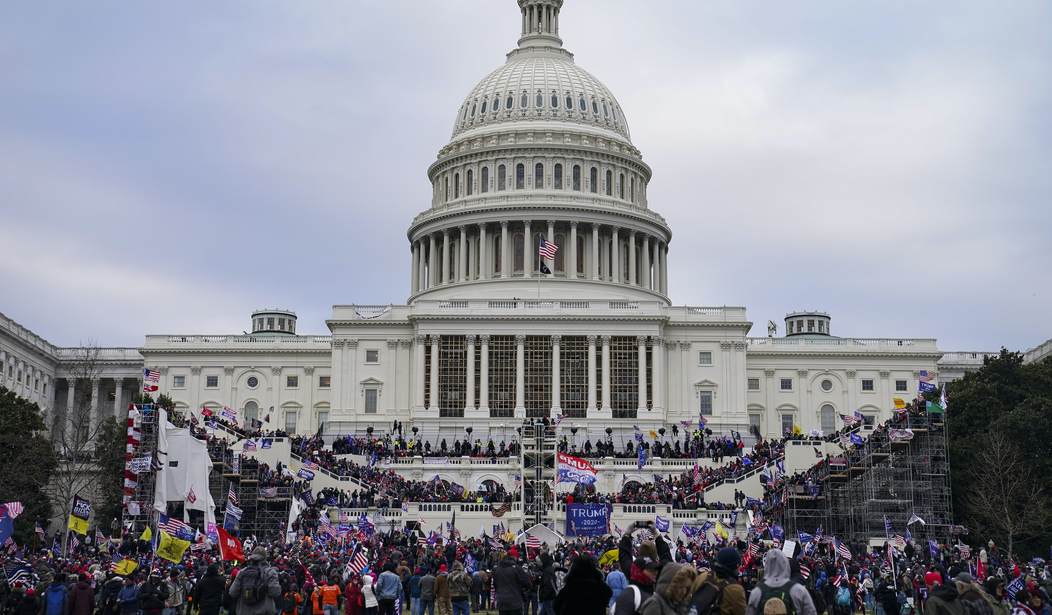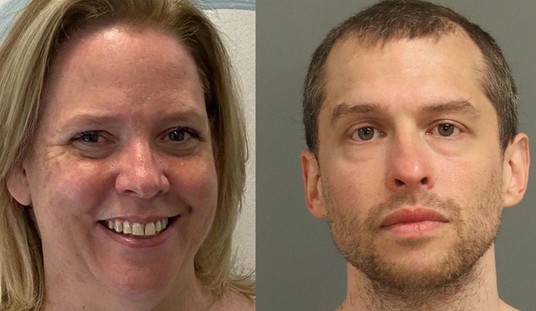Friday morning, the Supreme Court handed down a decision that has been anxiously awaited by thousands of defendants, family, and friends who are collectively part of the “January 6 Community.” Before the Court was the question of whether the Biden DOJ has been properly charging January 6 defendants under a statute involving a criminal obstruction of justice statute for “corruptly obstructing an official proceeding.” The particular statute being used came with a draconian potential maximum sentence of 20 years.
Without getting too deep into the legal weeds, the basic theory of the Government’s interpretation of the statute – 1512(c)(2) -- was that it represented a “dragnet” for any kind of “obstructive conduct” that was not otherwise described in more specific types of conduct listed in 1512(c)(1).
Section 1512(c)(1) is a statute that, by its very terms, is limited to what is described as “evidence impairment,” combined with an intention to prevent the evidence from being used in some proceeding.
In the Government’s interpretation, where the word “otherwise” linked the two sections, DOJ claimed that what followed in Sec. (c)(2) could encompass any form of behavior that was obstructive without being related to “evidence” or with an intent to prevent “evidence” from being used in a proceeding.
Defendants have argued from very early in the J6 prosecutions that the Government’s theory ignored the fact that the prior subsection dealt with only “evidence impairment” (i.e., “alters, destroys, mutilates, or conceals a record, document, or other object…”), and the “or otherwise” connector to Sec. (c)(2) had to be of similar kind or character to the conduct listed in (c)(1). Engaging in a protest/riot and breaking into the Capitol to disrupt Congress was not conduct that involved “evidence,” nor did it involve an intent to impair the use of such "evidence" in some proceeding.
But every District Court Judge in D.C. – except one – ruled in favor of the Government and held that the “dragnet” interpretation of the Sec. (c)(2) was correct, and protesting at the Capitol in the manner that occurred on January 6 was within the scope of conduct made criminal by Sec. (c)(2).
As has been predicted, the Supreme Court has now held that the argument advanced by the defendants – and rejected by all but one District Court Judge – was correct, and affirmed the decision of that one District Judge who had granted the defendant’s motion to dismiss that charge.
Supreme Court Hands Down Blockbuster Ruling in Case
That Will Impact Multiple J6 Defendants
The Supreme Court Firebombs the Administrative State
and Tells Congress to Get Off Its Butt and Work
On my initial reading of the decision, I was drawn to passages in the Opinion authored by Chief Justice Roberts on the issues that had always resonated with me:
The parties agree that to plug this loophole, Congress enacted Section 1512(c)—the provision at issue here—as part of the broader Sarbanes-Oxley Act. It would be peculiar to conclude that in closing the Enron gap, Congress actually hid away in the second part of the third subsection of Section 1512 a catchall provision that reaches far beyond the document shredding and similar scenarios that prompted the legislation in the first place. The better conclusion is that subsection (c)(2) was designed by Congress to capture other forms of evidence and other means of impairing its integrity or availability beyond those Congress specified in (c)(1).
The broader context of Section 1512 in the criminal code confirms that (c)(2) is limited by the scope of (c)(1). Federal obstruction law consists of numerous provisions that target specific criminal acts and settings. See 18 U. S. C. ch. 73. Much of that particularized legislation would be unnecessary if (c)(2) criminalized essentially all obstructive conduct, as the Government contends.
...
Reading (c)(2) to cover all forms of obstructive conduct would override Congress’s careful delineation of which penalties were appropriate for which offenses. Most instances of those prohibited acts would instead fall under subsection (c)(2)’s sweeping reach, which provides a 20-year maximum term of imprisonment. Such a reading of subsection (c)(2) would lump together disparate types of conduct for which Congress had assigned proportionate penalties in (a)(2) and (d)(1).
All of this was exactly in line with what I had hoped to see in the Court’s opinion before it came out. As I read it, my reaction was, “This is a Home Run.” The Government will be precluded from attempting to apply this 20-year obstruction statute based on the events of the day on January 6. For defendants who engaged in no act of violence towards law enforcement, this should be their path to much better outcomes.
For defendants already sentenced for a conviction on this charge, their cases should now come back to the District Court for resentencing on any other counts they may have faced, but in most cases, those other counts would be less serious, and the new sentences should be shorter.
Then the phone rang. Up to that point, I had only been skimming through the case, starting with the “Syllabus” – which all attorneys learn in law school is not part of the opinion – and looking at the line-up of how the Court voted. I was surprised that the Chief Judge wrote the opinion, although he has led many of the Court’s efforts over the past two decades to rein in expansive interpretations by DOJ on several other criminal statutes.
The person on the phone was Ryan Marshall, a young associate who has worked closely with me for two and one-half years on these J6 cases. Ryan’s first words were “Fischer seems to be not quite what we were expecting, don’t you think?” Having only skimmed it at that point, and focusing on language such as that I’ve highlighted above, I disagreed and said I thought it was a convincing win.
But Ryan – coming along very well with his learning – said, “But they are sending it back to the Appellate Court to consider the language of the indictment in light of the opinion. They are not saying 1512(c)(2) doesn’t apply under any circumstances to January 6 cases, just not as it was charged against Fischer. Does the DOJ get another chance with this?”
THAT comment led me to a second, more deliberate reading of the Opinion and further consideration of some of the procedural issues not being considered by most commentators on this subject.
Ryan was correct – the Supreme Court’s Opinion sends the case back to the same three-judge panel in the Circuit Court of Appeals, telling them to reconsider their prior decision — taking into account a narrower interpretation of (c)(2) than had been urged upon it by the Government. That means the Government will have an opportunity to explain why it is that it can fit the square peg of January 6 protest conduct into the round hole of “evidence impairment.”
That may ultimately turn out to be an impossible task, but the procedural posture of Joseph Fischer’s case means it is an opportunity DOJ is going to be given.
Consider the following – the first is from the end of the majority opinion by Chief Justice Roberts, and the second is from the concurring opinion of Justice Jackson:
To prove a violation of Section 1512(c)(2), the Government must establish that the defendant impaired the availability or integrity for use in an official proceeding of records, documents, objects, or as we earlier explained, other things used in the proceeding, or attempted to do so. See supra, at 9. The judgment of the D. C. Circuit is therefore vacated, and the case is remanded for further proceedings consistent with this opinion. On remand, the D. C. Circuit may assess the sufficiency of Count Three of Fischer’s indictment in light of our interpretation of Section 1512(c)(2).
It is so ordered.
Based on the Supreme Court’s analysis, DOJ faces an uphill climb, and the Appeals Court is likely to find that the charging language in Joseph Fischer’s indictment doesn’t work — the peg don’t fit — and the decision of the District Judge who dismissed the count should be affirmed. They will then send the case back to the District Court because there is still an indictment pending with other charges for which there has never been a disposition.
But now consider this passage from the Concurrence by Justice Jackson:
That official proceeding plainly used certain records, documents, or objects—including, among others, those relating to the electoral votes themselves. See Tr. of Oral Arg. 65–67. And it might well be that Fischer’s conduct, as alleged here, involved the impairment (or the attempted impairment) of the availability or integrity of things used during the January 6 proceeding “in ways other than those specified in (c)(1).” Ante, at 8. If so, then Fischer’s prosecution under §1512(c)(2) can, and should, proceed. That issue remains available for the lower courts to determine on remand.
So, WHAT HAPPENS when the case comes back?
Because Fischer’s case has not been resolved on the merits prior to the appeal, and there are other charges still pending, when the case is back in the District Court, the DOJ will be able to return to the grand jury to seek a Superseding Indictment that includes some form of the charge along the lines of what Justice Jackson’s concurrence suggests might be possible.
And Joseph Fischer will once again be facing trial on an indictment that includes a charge under Section 1512(c)(2), just written in a different fashion.
In most instances, when the Court dismisses a criminal charge against a defendant based on an insufficiency in the indictment, the Government is given the opportunity to return to the grand jury and try again. This is called a “dismissal without prejudice” – meaning without prejudicing the right to refile.
It would be surprising if, in some of the cases, when returned to the District Court, the judges did not give the Government at least one chance to return to the grand jury and produce a new indictment with different language that might seem to fall within the narrow construction given to the statute by the Supreme Court. As Justice Jackson said in her concurrence, the Court’s decision does not say Sec. 1512(c)(2) does not apply at all – only that it does not apply based on the way DOJ has phrased the charge in Joseph Fischer’s indictment.
There is no question that DOJ has been anticipating this possible outcome for a few months and has already settled on what its likely strategy will be in trying to fashion charging language that might get them a second bite at the apple. For three-and-a-half years, the Biden Justice Department has had only one setting in pursuing these cases – full throttle. They are unlikely to alter their approach now. Given that a grand jury in general – and DC grand juries in particular – will vote to return an indictment in just about any case presented to them by a federal prosecutor, if given the opportunity to rewrite the 1512(c)(2) charge against January 6 defendants, the Biden DOJ is going to take it. As a result, many of the defendants who have been charged with the insufficient Sec. 1512(c)(2) charging language will possibly be facing a re-jiggered version of that same offense in the weeks and months ahead.
How this comes about will likely play out differently for individual defendants depending on the status of their case presently – and the Judge they are assigned to.
In cases still in the District Court, motions to dismiss the pending counts will be filed in short order and will almost certainly be granted. If permitted – and I think it will be in most instances – the Government will return to the grand jury and likely emerge with new language.
It would be pleasantly surprising if that doesn’t happen, but nothing that has happened so far would indicate DOJ is simply going to give up on this charge.
For defendants who already stand convicted, but their cases are on appeal, they will “win” on their appeal of the 1512(c)(2) count.
If a defendant went to trial, maintained his/her innocence, and now wins on appeal, it is very likely that “double jeopardy” will prevent them from being hit with a re-worded 1512(c)(2) count and charged again. In that situation, the Government had its shot – it obtained an indictment, had a trial, got a jury verdict. The fact that the verdict is dismissed because of DOJ error does not give the Government a path around double jeopardy.
But defendants who pled guilty, did not maintain their innocence, and did not face a jury will likely – LIKELY but not certainly – face a situation where the Government will be given an opportunity to correct its error and resurrect the case. (Note: There is currently a split among the Circuit Courts of Appeal as to whether double jeopardy applies after a defendant enters a guilty plea and the Government later seeks to correct an error with a superseding indictment. The split seems to be driven in part by variations in the facts of each situation.)
Finally, there are some defendants whose cases are already “final” because they have no appeal pending. In those cases, it will be up to each defendant to decide whether or not to attempt to re-open his/her case in order to seek relief. Being able to do so will not necessarily be automatic. And reopening the case might have some collateral consequences that are not obvious to all.
This is the most complicated legal territory, and explaining it is beyond the scope of this first article.
If the Biden DOJ comes up with an alternative theory for how it can get the square peg into the round hole, defense attorneys like me will attack any new version of the 1512(c)(2) charges using many of the same arguments that we advanced the first time around.
That time, we lost with 15 of the 16 judges who heard them. But this time we will be able to say we have the Supreme Court on our side.
Editor's Note: This article was updated post-publication for clarity.













Join the conversation as a VIP Member